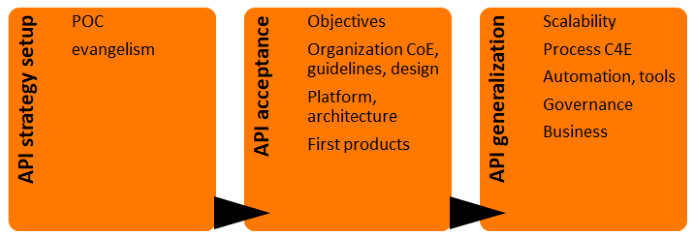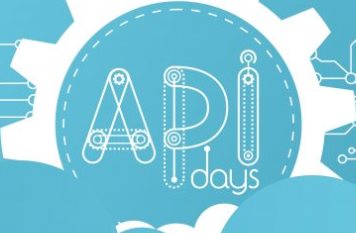Takeaways from the API Days 2019
Published: July 1, 2024
Last week, we went to the API Days in Paris. It is one of the world’s largest conferences dedicated to the economic impact of APIs in the modern IT landscape and the future of digital solutions. For three days, multiple conferences and workshops were held to discuss how APIs are the future of the IT sector, the digital transformation of the economy, the industry 4.0, AI solutions and the impact of APIs on society as a whole. Orange was also present to share some feedback and its experience with its Business Talk API. Here are some of the best practices and trends presented by Orange and the various companies in attendance.
A little history about API strategy
Most companies which implemented an API program were faced with internal difficulties to convince of the validity and use of the program within the organization. This is why a lot of them started with one rationale, focusing on core assets, customers’ interests and attracting developers. These programs, which usually started within the last 3 to 5 years, are now collecting their first results. In order to capitalize on that, and go a step further, some changes are needed.
Sharing best practices or hints on setting up an APIs strategy
A lot of the companies presenting – Orange, Société Générale, Axa, Alliance, Auchan, Carrefour, Airbus or Air France to name a few – shared their experience with setting up an API strategy and some tips for companies wanting to start in this API world.
The companies present at the conference put forth the following solutions.
- Customer relations. It has always been common knowledge that customer relations are key for a business, but when you involve APIs or digital services, you can really use it to your advantage: integrated physical and digital customer relations, integrated ecosystem to facilitate partnership (B2B) and empower business. Thanks to a large diversity and variety of APIs, you can build a satisfying customer experience, considering life events and addressing human situations.
- Cultural change: this has been a major issue on the road to a successful API strategy. If a company cannot convince of the interest for APIs in-house, it won’t be able to expand much further. One of the key drivers to focus on regarding this aspect is in-house evangelism to promote the benefits of APIs. To measure the acceptance rate, monitoring internal reusability is the way to go.
- Dedicated API business units or subsidiaries: to prevent cannibalisation and remain agile, entities dedicated to API-related business can be created.
- Timeline and objectives: this can sound a little generic, but having a clear timeline and objectives that take your product(s) from PoC to scalability can really help keep you on track.
The challenge of scalability
APIs have now become an essential part of big companies’ strategies. The issue they are now faced with, after seeing the first results in their API strategy, is scalability. Here are some feedback and answers given by some companies participating in the event.
A shift in companies’ internal organizations
APIs are everywhere in all (big) companies. Initially the recipe for success was to create Centers of Excellence (CoE) to manage and build the transformation. However, with a growing and well-established API program, there is a risk for CoEs to become bottlenecks or controllers. In order to improve the efficiency of their API programs, companies have to re-organise and shift to Centers for Enablement (C4E). These C4Es allow companies to pilot and facilitate the generalization of APIs use (empower vs oblige) but also manage the loss of control caused by the multiplication of rogue APIs (keep a homogeneous approach with design, guidelines…) and limit the risk of uncontrolled business.

What about API gateway manufacturers?
Some major API gateway manufacturers were also present and offered a sneak peek into their last product innovations. The main ones are hybrid solutions, which optimize deployment and latency, enabling you to manage event-driven APIs. The purpose of this hybrid solution is to support new needs for asynchronous information or the integration of GraphQL (as a complement to REST APIs more than as an alternative). The Mesh Service was also presented: it is an additional layer between micro-services that handles these exchanges in a dynamic and agile manner.
This year, GraphQL was at the honor of the event with a two-day track dedicated to the subject. There is a strong interest for this alternative to REST. However, for the moment, few actors are moving from POC to operational usage.
To conclude this feedback on the API Days, I think it is important to recognize we are at a tipping point in the API industry, with an expanding market and API usage becoming more mainstream. Thus requiring businesses to adapt their API strategy and operate a shift, if needed, in their operations. Let’s meet back at the next API Days to see if the trends and predictions actually got fulfilled.
